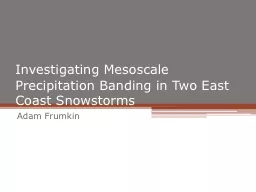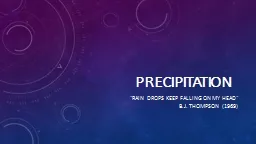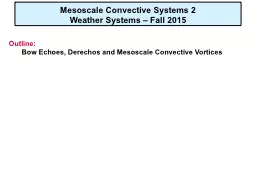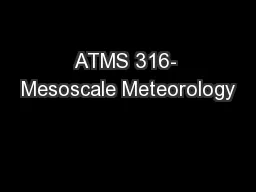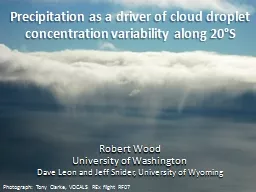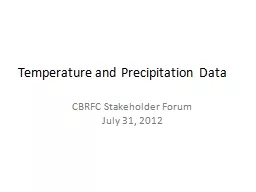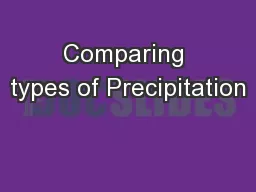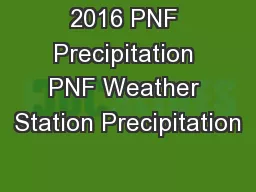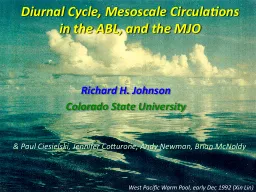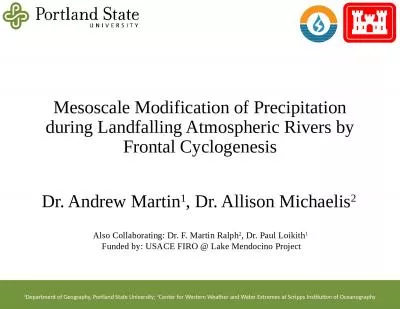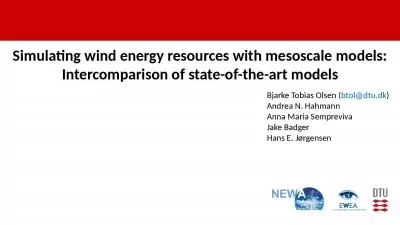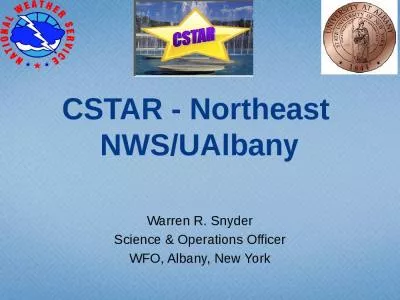PPT-Investigating Mesoscale Precipitation
Author : alexa-scheidler | Published Date : 2016-07-14
Banding in Two East Coast Snowstorms Adam Frumkin Outline Motivation Introduction and Background ObjectivesMethods Introduction to the Two Cases Results Conclusions
Presentation Embed Code
Download Presentation
Download Presentation The PPT/PDF document "Investigating Mesoscale Precipitation" is the property of its rightful owner. Permission is granted to download and print the materials on this website for personal, non-commercial use only, and to display it on your personal computer provided you do not modify the materials and that you retain all copyright notices contained in the materials. By downloading content from our website, you accept the terms of this agreement.
Investigating Mesoscale Precipitation: Transcript
Download Rules Of Document
"Investigating Mesoscale Precipitation"The content belongs to its owner. You may download and print it for personal use, without modification, and keep all copyright notices. By downloading, you agree to these terms.
Related Documents

